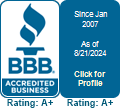How can you protect yourself when being overbilled for Less Than Truckload shipping? AMTR gives you 5 ways.
- Report weights accurately on the bill of lading.
Reporting weights accurately is essential with LTL moves. First and foremost, higher weight shipments are obviously more costly than those with lower weights. In addition, indicating an incorrect rate could cause you to be billed the incorrect rate per one hundred pounds (CWT rate) and can affect density. Incorrect density may cause you to be billed according to an incorrect NMFC item and class.
- Thoroughly document on the bill of lading all products shipped.
In order to apply the appropriate NMFC and class, it is essential that the specific product description be included on the bill of lading. It is always helpful to include actual product names, as well as any specifications such as sizes, composition materials, hazard classes and packing groups. If the items shipped are proprietary or obscure and no information is available online, it is a good idea to include a short description (i.e.: resin, cleaning compound or cosmetics). This ensures that the carrier, as well as your freight auditing firm—can apply the most appropriate classification. Bills of lading with pre-printed NMFC item numbers are not advised, as these items may change frequently.
- Clearly indicate payment terms.
Not every bill of lading is made equal. Be mindful that the bill of lading you are using may include instructions to automatically bill charges to either the shipper or the consignee if no other payment terms are included. The payment terms should be clearly indicated as prepaid or collect. If freight is to be billed third party, a company name and full address should be provided.
- Use pallets when possible.
Palletizing product makes pickup and delivery much easier. It also can save you money. Many carriers offer pallet rates to and from certain locations, either within their public rules tariff or within certain customers’ private pricing. Often, pallet rates are less costly than regular LTL pricing. Furthermore, pallets are often easier to correctly measure than other handling units, which is helpful when density needs to be determined.
- For shipper-loaded moves, load as efficiently as possible.
It may be hard to believe, but just a few inches can cause a significant increase in charges. For example, a shipper loads four relatively light, non-stackable pallets with side dimensions of 44 inches by 48 inches each and he chooses to use the 44 inch side as the width and the 48 inch side as the length. This creates total side dimensions of 88 inches width by 96 inches length. Typically, the inside width of a freight truck is 96 inches, and therefore, the shipper could have turned the pallets 90 degrees. Saving these 8 inches of length could make the difference between being billed LTL charges and being hit up with a costly density minimum charge.





There are no comments yet, but you can be the first